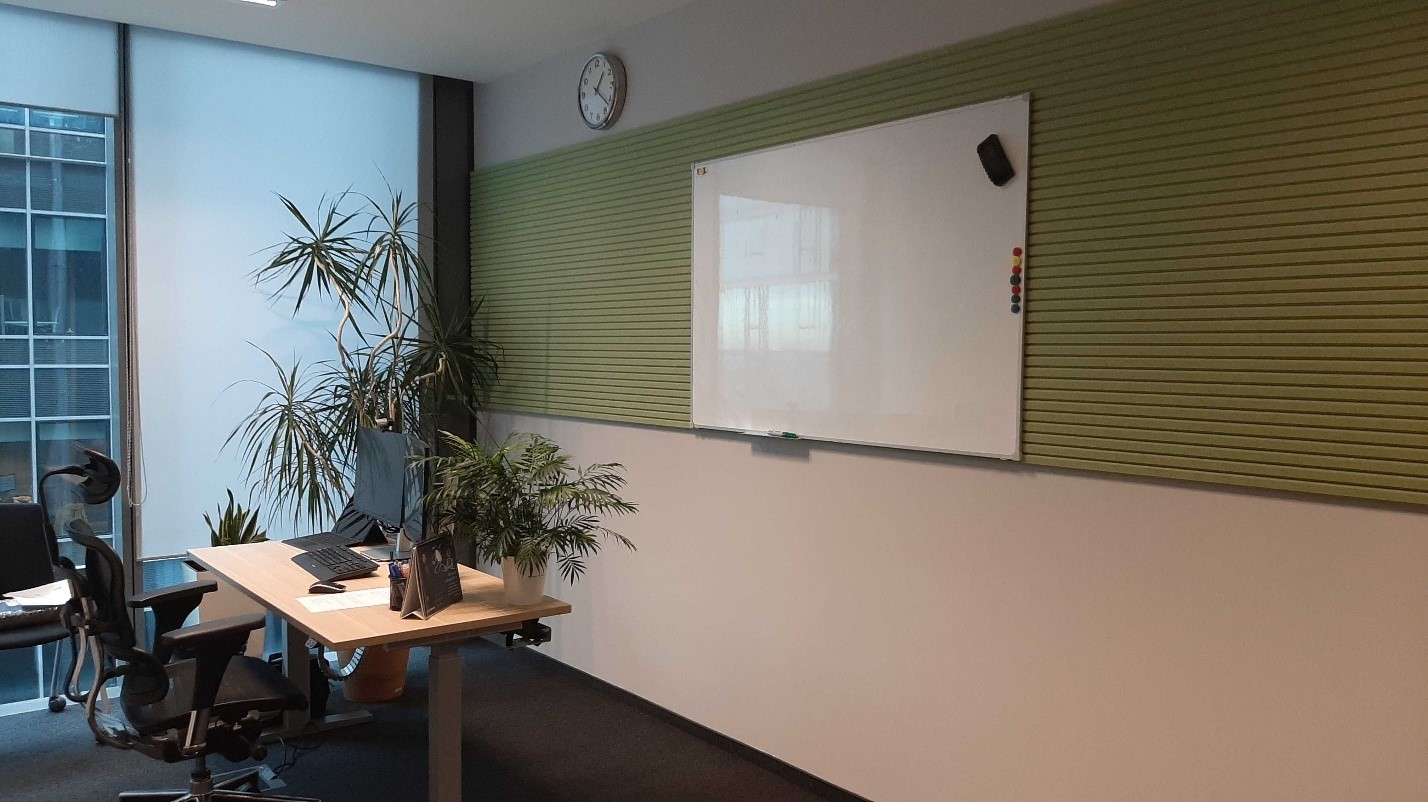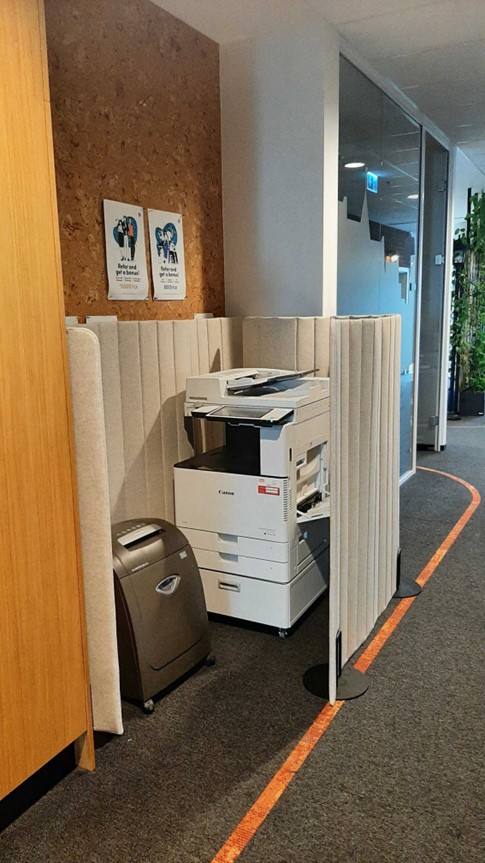In the modern workplace, the importance of acoustics cannot be understated. The acoustics of an office space, including its sound quality and noise levels, significantly impact the well-being and productivity of employees. In this blog, I’ll explore the challenges of office acoustics and the effects of noise on the work environment.
The topic is close to my heart since recently, we upgraded our Gdańsk Office and we introduced new acoustics solutions to improve working conditions. As it turns out, the case is more complex than it initially appears.
The Impact of Noise in the Office
Noise in the office can have far-reaching consequences that affect both employees and the organization as a whole.
Research shows that in offices where the sound level is 55-60 dB, employees feel discouraged at work and find it much more difficult to concentrate. For comparison, leaf noise is 10 dB, a truck is 90 dB, and a jet is 120 dB. Appropriate room acoustics not only ensures comfortable working conditions, but also has impact on our health.
Here’s a look at how noise can disrupt the workplace:
1. Reduced Concentration: Loud or constant noise can make it difficult for employees to concentrate on their tasks, leading to reduced productivity.
2. Increased Stress: Excessive noise levels can cause stress and discomfort, which can negatively impact the overall mood and job satisfaction of employees.
3. Communication Breakdown: Effective communication is vital in any workplace. Noise can hinder verbal communication, making it challenging for employees to exchange ideas and collaborate effectively.
4. Disrupted Workflows: Noise interruptions can lead to disrupted workflows, missed deadlines, and a decrease in overall work efficiency.
5. Impaired Well-being: Prolonged exposure to noise can harm the well-being of employees, leading to fatigue, irritability, and even physical health issues.
Understanding Office Acoustics
Office acoustics involve managing sound within the workspace to create a comfortable and productive environment. Here are some factors to consider when dealing with office acoustics:
1. Sound Absorption: Materials like acoustic panels, carpets, and curtains can be used to absorb sound and reduce noise levels in the office.
2. Sound Reflection: Hard surfaces like glass, concrete, and tile can reflect sound, creating echoes and increasing noise levels. Strategic design choices can minimize sound reflection.
3. Sound Isolation: Partition walls and doors with soundproofing properties can isolate noisy areas from quiet ones, preserving a peaceful working atmosphere.
4. Noise Sources: Identify common noise sources in the office, such as HVAC systems, phones, and open-plan workstations, and take measures to minimize their impact.
5. Acoustic Design: Office layouts and architectural features can be optimized to mitigate noise. This may include using curved walls or installing sound-absorbing baffles.



Conclusion
As we can see, the case is complex since it is not just noise. Noise does not have only visible repercussions, like interruption of conversations or call, but also not visible and more long-term effects like worse productivity, headache, higher stress levels etc.
That is why, office acoustics and noise management are essential aspects of creating a conducive and comfortable workspace. By understanding the impact of noise and taking steps to address it, organizations can improve employee well-being and productivity, ultimately contributing to a more harmonious and successful work environment.
Sources:
https://meble.lobos.pl/blog/akustyka-pomieszczen-biurowych-jak-zapewnic-komfort-pracy
https://www.bejot.eu/pl/wskazowki-akustyka-w-biurze
https://www.kinnarps.pl/wiedza/10-sposobow-na-poprawe-akustyki-w-biurach-na-planie-otwartym/
https://zdrowebiuro.com/srodowisko/akustyka-w-biurze/
